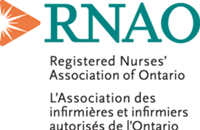A road map to make Ontario health care more effective and efficient
TORONTO, Feb. 1, 2019 /CNW/ - Canada's and Ontario's universal, publicly funded health system is the envy for many in the world. Yet, we can and must do better.
Indeed, every day in Ontario, patients suffer because our health-care system is slow and unco-ordinated. Many of these problems are highlighted in Hallway Health Care: A System Under Strain, the first report released by Rueben Devlin, who chairs the Premier's Council on Improving Health Care and Ending Hallway Medicine.
"No one knows these problems better than frontline nurses, and no organization has been so out front in seeking evidenced-based solutions as the Registered Nurses' Association of Ontario (RNAO), which represents more than 42,000 registered nurses (RN), nurse practitioners (NP) and nursing students," says RNAO president Angela Cooper Braithwaite.
RNAO plays a critical role influencing public policy, most recently by persuading the Ontario government to preserve supervised injection services – now called Consumption and Treatment Services (CTS) – which are needed in all communities across the province to save lives.
How can we make health care more efficient, coordinated and timely?
- Focus on preventing and better managing disease by strengthening interprofessional primary care clinics, which deliver great care at lower cost. To make these clinics even more effective, the province needs to relocate to the clinics (Community Health Centres, Nurse Practitioner-Led Clinics, Aboriginal Access Health Centres and Family Health Teams), the 4,500 RNs now working in the LHINs.
- Speed access to treatment of non-complex ailments by enabling RNs to order simple diagnostic tests and prescribe medications. Other countries like the UK and New Zealand have done so for decades but Ontario has moved at a snail pace.
- Improve access to care, patients' satisfaction and hospital cost-effectiveness by posting and filling the 10,000-plus RN vacancies in hospitals because evidence shows RNs deliver more bang for the buck. Ontario has only 669 RNs per 100,000 people compared to an average of 828 in the rest of Canada, so let's close the gap, improve care and save money.
- Direct cash-strapped hospitals to designate nurse practitioners (NP) to take the lead as most responsible provider (MRP) in more cases, a change that will speed up access and lower costs.
- Remove legislative, regulatory, and practice environment barriers to NPs' scope of practice by authorizing NPs to perform point-of-care testing, order additional forms of energy such as CT, MRI, nuclear medicine procedures, non-invasive EEGs, and ECGs in all situations.
- Stop the revolving door of hospital readmissions by requiring that after discharge, an RN conducts all first home care assessments.
- Help people with mental illness and/or addiction access what they need by enabling all health professionals to play an active role. As a start, authorize NPs to complete Forms 1, 2, 3, 4, 5, 14 and 28 for mental health services under the Mental Health Act. Ensure that RNs who already initiate and deliver psychotherapy continue to be part of the solution.
- Make a special point of working with Indigenous communities and their leaders to prevent child and youth suicide.
- Reduce transfers of residents from long-term care to costly hospitals by requiring LTC homes to follow best practices by extending their use of RNAO's evidence-based guidelines.
- Transform funding models in LTC to account for not only the complexity of resident care needs, but also the quality of their outcomes. Right now, homes that improve resident health outcomes lose funding.
- Legislate minimum nursing and personal care staffing and skill mix standards in LTC and provide the necessary funding to support these changes. Nursing homes should have at least one attending NP for every 120 residents, and a skill mix consisting of at least 20 per cent RNs, 25 per cent registered practical nurses (RPN), and no more than 55 per cent personal support workers (PSW). This ratio will improve care and reduce transfers to emergency room departments that can elevate risk for residents.
RNAO also recommends three additional critical changes. The first is that the province develop a provincial evidence-based human resource plan to align population needs with the full and expanded scopes of practice of all regulated health professionals. The second is to ensure Ontarians have a right to access their own health information/records. The third is that the government remembers that social and environmental factors determine our health, and cuts to these programs will result in people suffering and higher spending in health care.
"Ontarians deserve the very best health system; they own it and they pay for it though their taxes," emphasizes RNAO CEO Doris Grinspun, adding that "we have much to be proud and also much work to do. Nurses deliver care that is effective and efficient. RNAO looks forward to working with the Ontario government to make reforms that speed access, improve care, make our system more seamless and efficient, and strengthen Medicare."
RNAO is the professional association representing registered nurses, nurse practitioners, and nursing students in Ontario. Since 1925, RNAO has advocated for healthy public policy, promoted excellence in nursing practice, increased nurses' contribution to shaping the healthcare system, and influenced decisions that affect nurses and the public they serve. For more information about RNAO, visit RNAO.ca or follow us on Facebook and Twitter.
SOURCE Registered Nurses' Association of Ontario

To arrange an interview with a nurse, please contact: Jonathan Sher, Senior Communications Officer and Writer, Registered Nurses' Association of Ontario (RNAO), Phone: (416) 599-1925 / 1-800-268-7199 ext. 250 (toll free), Cell: (647) 217-2689, Email: [email protected]

Share this article